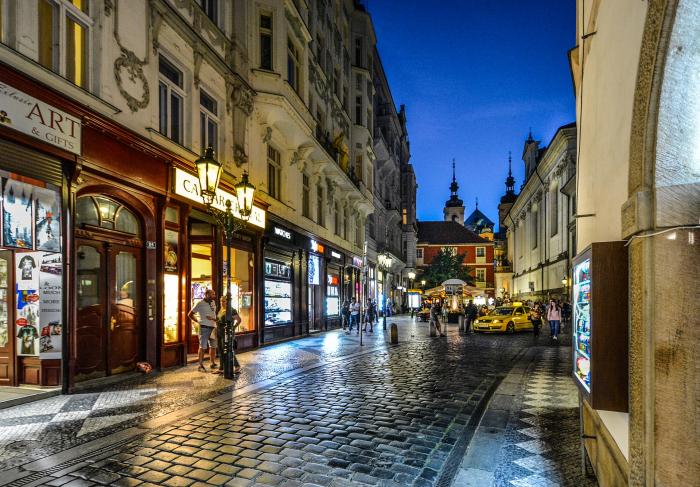STORM Site Heerlen
In the first demonstration site in Heerlen, flooded mine galleries act as a renewable heat source and provide a total of 500,000 m² floor area connected to a low temperature district heating and cooling network.
In the first demonstration site in Heerlen, flooded mine galleries act as a renewable heat source and provide a total of 500,000 m² floor area connected to a low temperature district heating and cooling network.

The main goal of the Small Giants Initiative is to provide an access point for smaller cities to collaborate within an action-focused, thematic network. Through this approach, very practical solutions can be developed to address the common needs of smaller cities by delivering solutions that are better, faster, and more affordable. Smaller cities are where most European’s live – so we neglect this largest market at our peril!
There are now some 20-40 smaller cities involved in the joint, informal network created through collaboration between the Small Giants initiative and the Small & Medium Cities (SMC) network.
A survey of Small Giants Mayors and senior officers highlighted some common and pressing challenges:
The research also highlighted a strong desire to collaborate to address these challenges through: -
We believe that this that can result in solutions that provide more certainty, de-risk implementation and operations, and, most importantly, can be cheaper to acquire.
It is worth noting that smaller cities also have some significant advantages over their large counterparts. They are closer to society, nimbler in action and the impact of actions can be more easily evidenced.
Approach
The Small Giants initiative helps smaller cities see what is going on around Europe and participate where it makes sense to do so. Our survey revealed a number of themes where smaller cities can work together to develop shared solutions to common needs. Top of the list is ‘Circular City’, amongst other topics like Mobility Transition, Digital Responsiveness, Societal Insight and Engagement, Performance Management, Market Engagement, and Smart Infrastructure.
Initiatives bring together manageable, small groups of cities to: -
Wise use of limited resources and a win for all!
Significant progress has been made on the shared challenge of Mobility Transition through collaboration on the transition roadmap and a specific measure, “Mobility Islands”, that stimulates the shift to clean, affordable, shared micro-mobility. Around 20 cities from across (and beyond) Europe are presently collaborating on a common approach, design, tools, and project development and are seeking to access a combination of grant funds, EU SCM ‘Matchmaking’, and Institutional financing.
Route Map
The overall route map for the Small Giants involves the following measures: -


Gothenburg is the second largest town in Sweden with 526.000 inhabitants. The city has changed since the 1970s from being an industrial city to also become a “knowledge city” with The University of Gothenburg, and Chalmers University of Technology. Gothenburg has a rich cultural life, but it is also one of the most segregated cities in Sweden. Social sustainability and integration is high on the cities agenda. The area of Hammarkullen is located in Angered, one of ten city districts in Gothenburg, northeast of downtown.
As a major player in the Local Climate Plan since 2004 and as a Covenant of Mayors’ member since 2008, the city of Grenoble is committed to reducing energy consumption, encouraging the use of renewable energies, promoting social solidarity, setting up alternative forms of transport and developing environmental, architectural and urban quality. The main objectives of the Grenoble Local Climate Plan, launched in 2004, and revised in 2009, remain the reduction of local greenhouse gas emissions by factor 4 by 2050.
Disclaimer: This project has been recently launched and there is not sufficient information available yet. Check this page regularly for updates.
The Munich lighthouse demonstration area within the SMARTER TOGETHER project is located at the western edge of the city, and includes both the large urban redevelopment area Neuaubing-Westkreuz and the flagship new development area Freiham, set to become a model of low-carbon development for up to 20 000 new residents and 7 500 new jobs. With the aid of cutting-edge technology and the intelligent use of data, Munich’s objectives are to cut CO2 emissions by more than 20 %, raise the use of renewable energy to above 20 % and increase energy efficiency by more than 20 %.
The SMARTER TOGETHER project demonstration area in Vienna is located in the central part of the south-eastern district of Simmering. In total, 21 000 inhabitants will benefit from smart project solutions within the fields of refurbishment, energy, mobility, and information and communication technologies. An emphasis is made on dialogue, in line with the Vienna Smart City Framework Strategy, where the human dimension of the smart city is the focus of attention. Dialogue includes all generations and backgrounds aiming at contributing to an integrated societal dynamic.